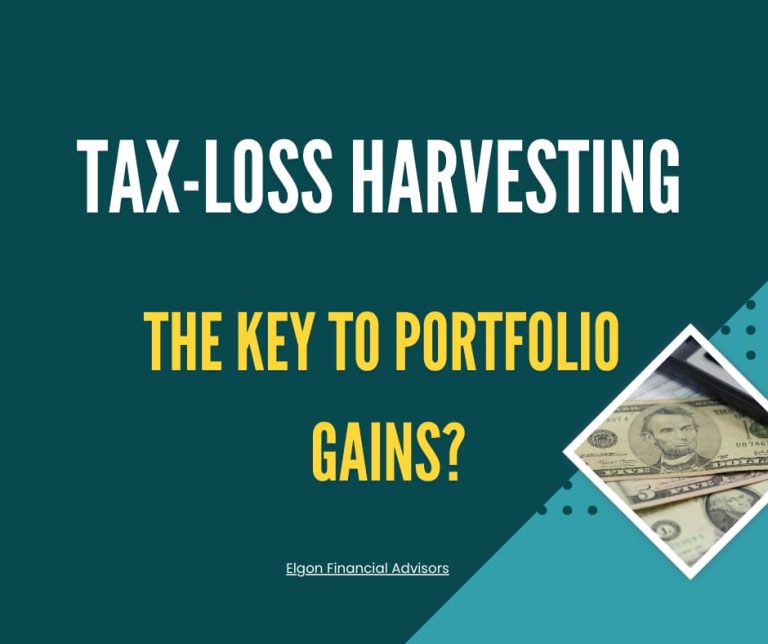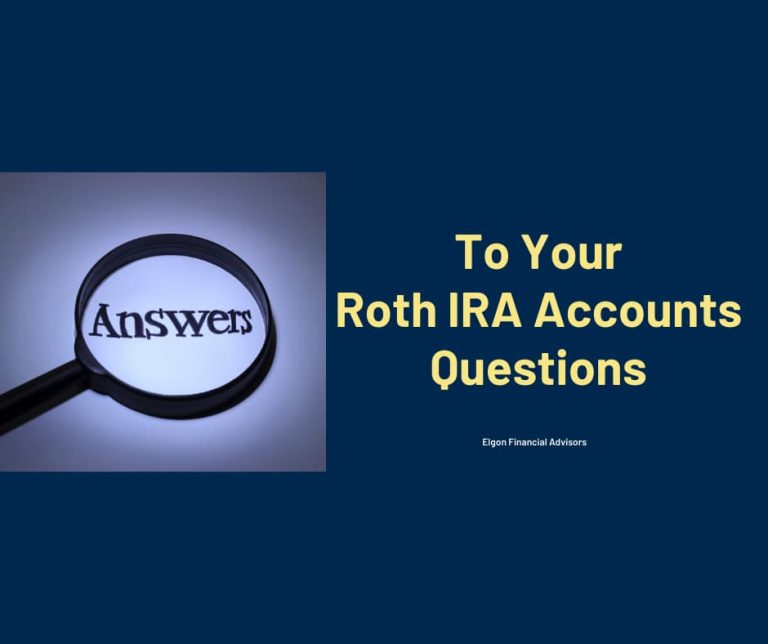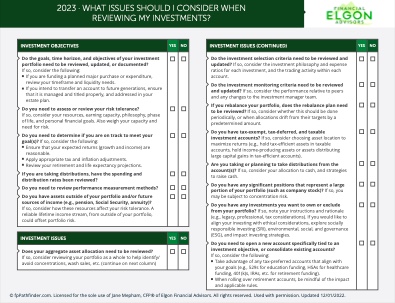Article’s Summary
- Mistake 1: Not understanding income limitations for Roth IRA contributions.
- Mistake 2: Misunderstanding filing status impact on Roth IRA eligibility.
- Mistake 3: Ignoring the pro-rata rule when doing a backdoor Roth IRA conversion.
- Mistake 4: Waiting until the deadline to make a Roth IRA contribution.
In today’s post, I discuss the 4 top Roth IRA mistakes to avoid as you get ready to contribute for 2022.
There are a couple more, but I’m focused on the ones I see the most.

Everybody is keen to have a Roth IRA account, but messing up with the rules can be very costly.
You still have time to make a Roth IRA contribution for 2022. My only caution is, to avoid the following mistakes and you’ll be fine.
But first, a quick reminder on Roth IRA accounts.
What Are The Benefits Of Saving Money In A Roth IRA Account?
In a previous post, I addressed the benefits and features of a Roth IRA Account.
There are a couple of benefits to saving money in a Roth Account. Some of the benefits include the following.
The money is contributed after taxes and grows tax-free and can grow for as long as you (the owner) are alive.
There are no RMDs (Required Minimum Distributions). RMDs are typically required so IRS can get its share of taxes. In this case, since there are no taxes to be paid, this is a moot point.
But keep in mind that once the account passes to your beneficiaries at death, even though it passes tax-free, the inherited IRA rules kick in and they will be required to withdraw all the money from the account within 10 years of your death.
You can take the money out tax-free. Keep in mind that the Roth IRA account needs to have been in existence for at least 5 years to be able to get the money out tax-free.
What Are The Basic Rules Of Contributing To A Roth IRA Account For 2022?
You have until April 18th this year to contribute for 2022 (Typically April 15th).
The money must be from earned income, and your contribution cannot be more than the earned income. The income/contribution limits typically apply to teenagers starting. This is not usually an issue if already earning but comes in handy in this example below
Example 1: Your teenager made $5,000 last year, she cannot contribute the full limit of $6,000 for 2022. For 2022, she is limited to $5,000.
- If married, and you have the income to support it, you can make a contribution for your spouse – known as a spousal Roth IRA.
The following are the top Roth IRA mistakes I have seen folks make in the last couple of years. Some of them could end up being very costly.
At the end of the post, I’ll discuss how to undo some of these mistakes if you’ve already made them.
This allows you to create a clean slate moving forwards.
Let’s get into the top 4.
Roth IRA Mistake 1 – Not Fully Understanding The Income Limitations
Whether you can make a direct Roth IRA contribution for 2022, will depend on your MAGI (Modified Adjusted Gross Income), as well as your filing status. The following discussion details the contribution limits.
If you are single or filing as Head of household, and your MAGI is $129,000 or less, you can make a direct Roth IRA contribution. You can contribute the maximum which is $6,000.
For the same filing status, if your income is between $129,000 and $144,000 – you’ll be able to make a partial contribution, using the phased-out limits.
If you are married and are filing MFJ, your MAGI limit is $204,000 for the full contribution. If between $204,000 and $214,000, then the phaseout amounts apply.
Roth IRA Mistake 2 – Filing Status Misunderstanding
The most common mistake I have seen in this space is when a couple is married but is filing separately for various reasons. Regardless of the MAGI, the income limit for Roth IRA contributions is limited to $10,000 with this filing status.
This means that if they made more than $10,000 (separately), they cannot contribute to a Roth IRA. It’s a very low threshold and it’s a mistake I see people making over and over again.
The key thing is when you choose to file separately consider everything that could be impacted by the decision.
Roth IRA Mistake 3 – Ignoring The Pro-rata Rule If You Do A Backdoor Roth
If your income (MAGI) is too high, you still have a way of getting money into a Roth IRA, via a two-step process, commonly referred to as a backdoor Roth.
Step 1: Contribute to a non-deductible traditional IRA.
Step 2: Convert that to a Roth IRA a few days later, before investing the money. Since there will be no growth, there are no taxes to pay.
The method assumes that you have no other IRAS, 401ks are fine.
If you have other IRAs, as of Dec 31st of the conversion year, then the conversion will take into consideration those other IRAS, and you’ll need to pay taxes on this.
The issue I see is ignoring the other IRAS, not paying taxes, or simply misunderstanding how the rules work when you have other IRAS.
How the Pro-Rata Rule Works
When you have more than one IRA, which by the way includes SIMPLE IRA, SEP IRA, Rollover IRAs, etc., and you open a new IRA for the backdoor process, IRS – aggregates all your IRAS, and looks at them as one giant IRA. The example below will illustrate this point.
Example 2: You have an IRA with a balance of $30,000. You open your new IRA with a balance of $6,000. IRS says only $6,000 (16.7%) of your $36,000 balance can be converted tax-free since it’s the only portion that’s been taxed already. So only 16.7% of 6,000 or $1,002 can be converted tax-free. You have to pay taxes on the rest of the amount. In this case on $4,998.
The $4,998 is added to your income, as you have to pay ordinary income on that.
Roth IRA Mistake 4 – Waiting Until The Deadline To Make The Contribution
This is a procrastination issue; I see a lot. You have very good intentions, but you end up waiting until it’s too late or you are having to scramble at the last minute.
If you know you’ll be under the income threshold, and you know how you’ll be filing your taxes, you don’t have to wait. Get it done, now and give yourself the benefit of time in the market.
On a Work Visa and Roth IRA
The Roth IRA can work for you, but depending on where you plan to be when you withdraw the money, there could be very serious tax efficiencies, that make this a less-than-ideal account. Let’s talk first before you open the account.
How Do You Deal With The Roth IRA Mistakes?
Now that I have detailed the mistakes I typically see, you are hopefully not going to make them in 2023.
But if you’ve already made them, there are a couple of ways to fix them, but work with your financial advisor, and your CPA to figure out the best solution for your situation. The fixes will depend on the mistake, but also when you made the mistake.
If you’ve made illegal contributions (that’s what IRS calls them) – you might be able to recharacterize them as traditional IRAS. Otherwise, you might have to remove those contributions. Every year the money remains in the account, and there is a 6% penalty. But if you remove the money by October 15th after the year it was made, SECURE Act 2 has changed the rules, so you won’t be penalized.
If you’ve messed with the Pro-rata rule and did not include the extra income, you might have to amend your prior years’ returns, to account for the extra income.
The Roth IRA is a great tool, make the most of it, and you have a shot not only at improving your future but also creating and passing on generational wealth.
Need Help Figuring Out The US Financial Landscape?
Free Financial Assessment
If not ready to start, that’s okay, but please stay on top of our regular updates by email, or by joining here. Sign Up Here.
Disclaimer: This article is provided for general information and illustration purposes only. Nothing contained in the material constitutes tax advice, a recommendation for the purchase or sale of any security, investment advisory services, or legal advice. I encourage you to consult a financial planner, accountant, and/or legal counsel for advice specific to your situation. Reproduction of this material is prohibited without written permission from Jane Mepham and all rights are reserved. Read the full disclaimer here.





